投稿日:
更新日:
The techniques of manufacturing have been bornShinshuMiscellaneous goods that align with your life
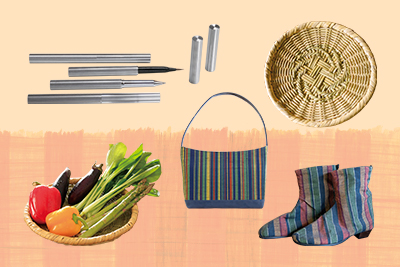
ShinshuOur proud traditional crafts and precision processed products. At first glance, they may seem like opposites, but both are surrounded by mountainsShinshuThis is something that was created by the environment and the prefectural citizenship, which is said to be diligent. However, I'm sure there are many people who think that this is quite far from their lifestyle. In fact, the items created by solid techniques are now transforming into shape and are beginning to shine in our lives.
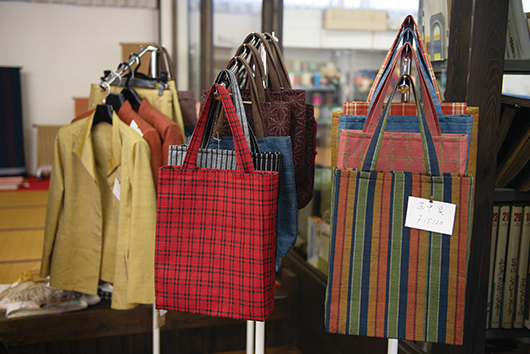
One of Japan's three major tsumugi, born in the center of silkworm species
Ueda City was once known as the "silver eggs" industry, which was so popular that it was made into a "silver silver eggs." Ueda Tsumugi, which is said to be one of Japan's three great tsumugi, has been passed down through this region. The first thing that started was when sericulture farmers used trash cocoons that were not made into products for their own use. Tsumugi weave is made by spreading a scrap cocoon into a cotton pad and woven with spun tsumugi thread.
"The Chikuma River that flows through Ueda has been flooded for a long time, but mulberry, which is the food for silkworms, does not flush because its roots are deep, and the flooding brings fertile soil from the upstream, so the mulberry grows well, and the silkworms grow. Furthermore, the strong river breeze brushes off pests, which are the enemy of mulberry, and Ueda has become the center of Japan's silkworm industry. It is said that Ueda Tsumugi is strong because it is blessed with raw materials and is weaved in plenty of solid material.
This is what I say, Nagano Sato Motomasa of Fujimoto Tsumugi Studio, founded as the textile division of the company that first began manufacturing silkworm seeds in the prefecture. Ueda Tsumugi, which specializes in vertical stripes, appeared as a stylish kimono in Ibara Saikaku's "Nihon Eidaizo" during the Edo period, and since there are no rules for color and pattern and patterns, the price is relatively affordable, it is said to be a place where kimono lovers who want to wear a variety of things will end up with.
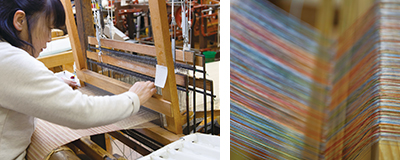
However, there are now fewer people wearing kimonos. With the aim of aligning modern lifestyles, Fujimoto Tsumugi Kobo creates unique accessories such as tote bags, pouches, cases, and book covers. In addition, each workshop is also working to provide materials to overseas brands and to dye differently than before, such as apple dyeing. This vision is that "we will aim to create products that are highly valued with the entire production area in mind, focusing on overseas expansion," further accelerating the evolution of Ueda Tsumugi.
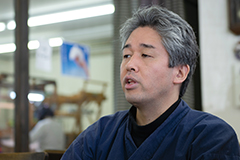
"Weda has a culture of incorporating new things for a long time, and Ueda Tsumugi has also been made according to trends and customer requests," says Sato. It also incorporates trends in color usage, making use of the high degree of freedom that takes advantage of the lack of classic patterns. In addition, the Ueda Tsumugi Textile Cooperative has a campus in Ueda City.ShinshuWe are working on sericulture in collaboration with the Faculty of Textile Science, University, and are engaged in a wide range of activities, including creating locally produced cocoons.

*In the past, the raw material was made from rubbish cocoons, but today's raw material is ordinary cocoons.
[Ueda Tsumugi Textile Cooperative Association (inside Fujimoto Tsumugi Kobo)]
TEL 0268-22-0900
INFORMATION Ginza NAGANO However, we plan to sell small items and other items. Stay tuned!
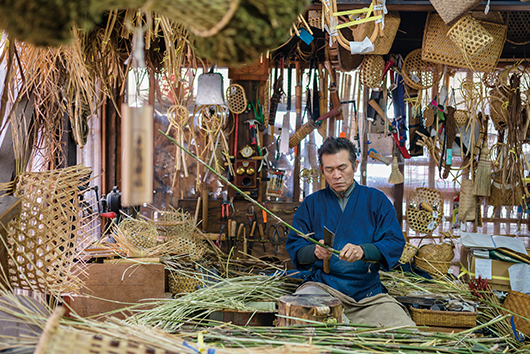
Togakushi bamboo craftsmanship
Traditions cultivated by lifestyles along with the Togakushi area
"Togakushi bamboo crafts made from bent root bamboo (chishimazasa) that grows naturally in this region have supple and strong fibers. Imported bamboo craftsmanship will make your thorns stand out when used, but Togakushi bamboo craftsmanship will become amber-like color that will fit in your hand and become smooth enough to rub your cheek against it. What you sell is not finished, but matures when you use it," says Inoue Eiichi, head of the production association. The true essence of the "sobazaru" is a specialty of soba noodles, and by using different types of young bamboo shoots, two-year-old and three-year-old pieces, it is carefully knitted to create a sturdy and highly complete item. This skilled technique creates a variety of tools used in nature and in the kitchen. In the past, the main focus was on winged fish and fish baskets, but recently Inoue has been working on things that suit the times, such as lunch boxes and bags.
Among these daily necessities, the coffee dripper has attracted a lot of attention. It has a high-quality appearance that condenses traditional techniques, and is now so popular that it cannot be reserved, as it was featured on TV programs.
On the other hand, they also faced a urgent problem of a lack of successors. "Even if we can leave behind technology, it's meaningless unless the culture remains in this area. Our goal for the future is to pass on the culture of the entire region, including Togakushi Shrine, the mountains, and people's lives, to the next generation through Togakushi bamboo crafts, which are rooted in daily life." This kind of thought can be brought to the hands of Inoue, who weaves bamboo.
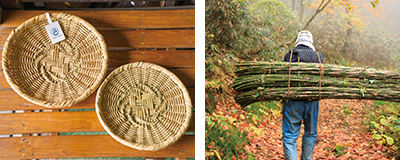
"The fun of bamboo craftsmanship is that it can flexibly respond to customer requests, such as shape and size. Another attractive feature is that it is a self-contained type where you enter the mountains and cut out the bamboo material from the ingredients," says Inoue. He grew up in a house that made bamboo crafts for generations, and when he saw his grandfather and father, he recalls his time by saying, "I felt that the movements of the hands, which continue to cut and split the bamboo, become thinner like fibers, have become completely different three-dimensional shapes, and breathe new life into new life."
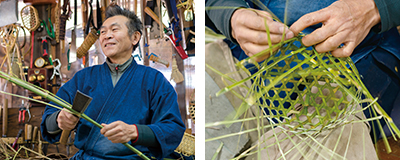
Bamboo craftsmanship is made using macaws, scissors, and a small cutter. Tools are made to order by a blacksmith, and the best way to make the materials used to break bamboo is to create.TimesIt also requires technology. "Depending on what you make, the thickness and width of bamboo with knots and different hardness are aligned. Good materials will produce good products," says Inoue. It is said that in the past, people were able to split bamboo even after a power outage, as they were cut out using the feeling of their fingertips. However, even skilled craftsmen seem to find it difficult to satisfy them.
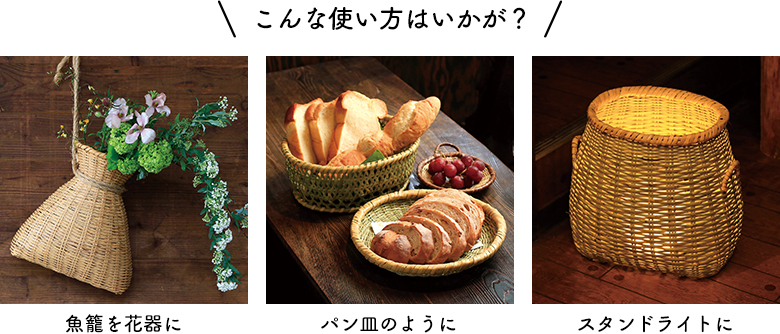
[Togakushi Nakasha Bamboo Works Production Association]
TEL 026-254-2391
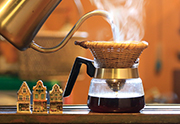
A coffee dripper was born in Inoue, who has a hobby of climbing mountains, to use his skills to drink delicious coffee on the summit. It's a product that's hard to find, but it starts from around December 20th. Ginza NAGANO Limited quantity is available every month!
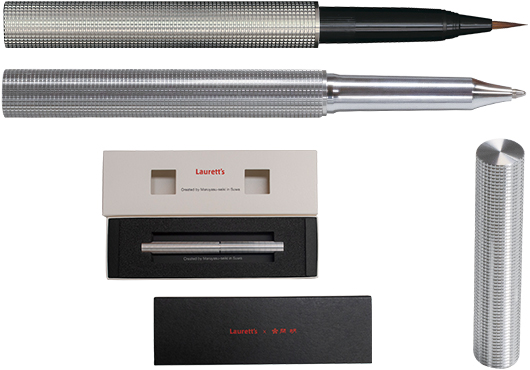
Laurett's
A stylish stationery that combines cutting edge x tradition, rigid x softness, and opposites
Maruyasu Seiki Seisakusho is a company that has advanced cutting technology in the Suwa area, where precision machinery industries such as watches and optical equipment are popular, and manufactures a variety of exterior parts such as cameras, audio and automobiles. The company created a stylish brush pen called "Laurett's MLK Fountain Brush." The first thing that catches your eye is the beautiful and precise design that makes use of the knurled processing technique, which cuts the aluminum surface into a jagged shape. When you actually touch it, it will become addictive. When you remove the cap, the tip of the brush, which was created in collaboration with Kaimei, a long-established ink manufacturer, slides like it guides the handle of the pen.
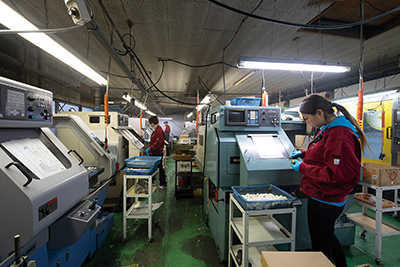
Their birth was inspired by their desire to "create original products that make use of our company's pride and technology," and the idea of "how about making stationery," which came from a designer who visited the factory. The trial and error was repeated with the aim of "a fusion of modern solidity in metalworking with the old-fashioned softness of brushes," and about two years were spent completing it.
The product was recognized for its completeness and unprecedented innovativeness, and in June this year it won the excellence award at the prestigious Japan Stationery Awards (Design Category). "It was a huge award known to the public, and I was really surprised and happy to be recognized by the world," recalls director Nagamine Ihiro. It attracted even more attention, and the ballpoint pen series was released this summer.
Nagamine is enthusiastic about this company, "We want to become a smart company that can challenge things that are interesting, and to further promote the manufacturing culture of the entire Suwa region." We are looking forward to the new challenges of Maruyasu Seiki Seisakusho, which marks its 51st year in business.
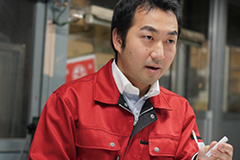
"Laurett's" is carved out using super beautiful cutting. Three types of fountain brushes and ballpoint pens are available now. Both ends are made of spiral spinning, making them different from the sides. "What I focused on was the simple beauty of the exterior and the funniness of the brush pen when opened. I was worried about whether to attach a clip to prevent it from rolling and portability, but in the end I valued the unexpected look and design. I would like people who are particular about things around me to use it," says Nagamine.
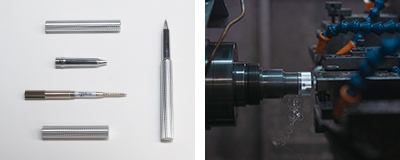
We carve all the internal parts of the ballpoint pen in-house, and while the body and cap are made of aluminum, the tip of the pen is made of brass, which gives it a center of gravity for the front, improving stability. The ballpoint pen core is one that is the smoothest writing experience when used, but it can be replaced with something that is more user-friendly. He is also considering developing an extension bar that will increase the length of the body of the brush pen in the future.
[Maruya Seiki Seisakusho Co., Ltd. Laurett's Division]
TEL 0266-52-3756
GinzaItoya,GinzaAvailable at Tsutaya Bookstore (GINZA SIX 6F). Please try to experience the authentic beauty.

Industry-academia-government collaborates Nagano We are taking measures to select and inform the prefecture's excellent brands, increase the appeal of the region, and increase the brand value of the entire prefecture. It has been held 15 times so far, and Hachimanya Isogoro and Jigokudani Saru Park have won the grand prizes.
This article is information as of December 2018.
Please note that the products we carry may have changed.















